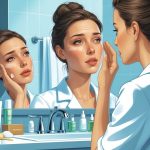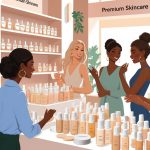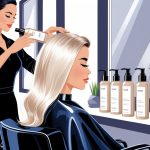Hair Loss Solutions Finally Getting Results Without Harsh Treatments
Getting Proper Diagnosis for Lasting Results

I used to get obsessed, like, why is there a hair horror scene in my shower every morning? Vitamins, thickening sprays, a graveyard of half-broken combs—none of it helped. Sometimes I’m brushing my teeth and realize my shampoo has more ingredients than my dinner.
Role of Dermatologists and Trichologists
Dermatologists ask the weirdest questions: Did I change my diet? Am I stressed? (Ha, who isn’t?) Apparently, it matters more than all the avocado toast I ate in 2017. My cousin Tony says to rub onions on my scalp, but real doctors want to know my life story, my family’s hair, what meds I’m on.
Trichologists—imagine that as a podcast—just do hair and scalp. They hunt for fungus, inflammation, whatever. I didn’t know I needed someone to stare at my scalp under a spotlight, but here we are. If one more person tells me “it’s normal,” I’m handing them my doctor’s notes. These folks notice the tiniest changes—like that time my part started zig-zagging for no reason.
Dermatologists sometimes order bloodwork, which is not what I expected from a hair appointment, but sure, why not. They’re the only ones who can hand out the strong stuff, so unless you want to risk ordering sketchy minoxidil online, maybe just see a pro.
Analysis of Hair Follicles and Hairline
Doctors use little scopes on your head. It’s weird. They check how many follicles you’ve got, what shape, how thick. Sometimes they pluck a hair or two (which feels like sabotage, honestly) and look at the roots. There’s all this jargon—miniaturization, telogen, phases that sound like moon cycles.
Suddenly my forehead has coordinates on a chart. “Recession along your right temporal line”—pretty sure that’s where my sunglasses sit. The more I stare at my hairline at home, the less I know what I’m looking for. Is it receding or just a weird cowlick? Who can tell.
Apparently, follicle health shows up before you even notice thinning. Doctors see “halo effects,” shiny skin, or just a sad, flaky scalp—which I always blamed on my pillowcase. Why do pillows get a pass? Anyway, patchy or sparse follicles mean something’s up, and no amount of drugstore serum is fixing it.
Recognizing Early Signs Like Baby Hairs
Those baby hairs along my forehead? I always thought they meant new growth, like, “Yes, it’s working!” Nope. Sometimes they’re a distress call—could be new growth, could be breakage, could be nothing. Ask anyone in the hair aisle, they’ll say every sprout is good, but I’ve spent mornings squinting under my desk lamp just hoping the fuzz isn’t running away.
Doctors hand me symptom checklists, but I just tick everything: wider part, snapping hair, bobby pins everywhere. Early signs get brushed off as “seasonal” until a specialist with a clipboard says, nope, losing both baby hairs and thick ones means something’s up.
Here’s the thing: catching changes early doesn’t mean you can prevent them by dyeing your hair pink (I tried, pink’s cool, but hair still shed). It’s about watching patterns—where it thins, not just what ends up in the drain. If your barber says, “Hey, I see more scalp,” maybe don’t just tip bigger—actually book an appointment.
Gentle and Effective Hair Loss Solutions
Look, I’m not chasing “miracle” cures or anything that comes in a box the size of a small car. I just want something that works without making my scalp feel like it’s on fire. The best stuff? Usually not flashy, not outrageously expensive, and it doesn’t show up in late-night infomercials.
Embracing Non-Invasive Treatments
Non-invasive. Ugh, the phrase always makes me think of, like, those medical pamphlets with smiling people, but whatever. I mean, lasers in a headband? Not exactly “Star Trek,” but I guess it’s more than just a weird infomercial thing now. Low-level laser therapy (LLLT) devices—so, those helmet things—yep, I caved and tried one. I spent half the time worrying the power would cut out mid-session and fry my hairline or something. Did it work? I don’t know, but I definitely got more anxious about extension cords.
I fell down a rabbit hole reading about FDA-cleared laser caps, phototherapy combs—why do clinics act like this is the future of medicine? “Non-invasive, no downtime,” they say, which, sure, beats my uncle’s hair plug horror stories. Most people just get a little scalp tingle, nothing wild. No blood, no gross chemicals, just sitting under pulsing red lights like a fern that needs a therapist.
Exploring Innovative Approaches
I can’t scroll for five minutes without seeing some new “miracle” thing—supplements, caffeine shampoo, botanical serums (seriously, what’s pea sprout extract supposed to do? Is it, like, micro-gardening for your head?). I don’t know. If a hair product sounds like a smoothie ingredient, there’s probably a study somewhere, but who’s reading those except dermatologists and, I guess, people like me at 1 a.m.?
Not everything’s FDA-approved, obviously. Off-label oral minoxidil? People whisper about it like it’s contraband. Microneedling rollers? I see threads about them, but needles freak me out, and apparently, I’m not alone. My friend’s cat tried to eat a biotin gummy once—don’t think that’s part of the research, but hey, nutrition is everywhere now, especially if it comes in a neon bottle.
The Shift Away from Harsh Chemicals
Ever stand in the shampoo aisle and realize you can’t pronounce half the ingredients? Been there. For years, I got told harsh chemicals were the only “real” way to get hair back. Now, suddenly, everyone’s quitting them like a bad habit. “Sulfate-free! Paraben-free!” is on every bottle. I tried this rosemary oil serum once—my bathroom smelled like a failed soup experiment for days.
Now it’s all about minoxidil foams, peptide shampoos, lines that brag about “no synthetic fragrance.” Dermatologists, at least the ones I’ve seen, nudge you toward these gentler things, especially if your scalp throws a fit at the first sign of trouble. My cousin’s obsessed with “all-natural” serums. Family group chat? Full of arguments about whether caffeine actually gets to hair follicles. Personally, I’d rather never rinse out castor oil again, but that’s just me.
Proven Topical Treatments Without Side Effects
Sometimes I’m rubbing some sticky stuff into my hairline, half-assing emails, and wondering if this bottle will just let me down. Most products? Big promises, meh results. Some just smell good, some just make my hair greasy. Eventually, you stop caring about claims. What I care about? Stuff that doesn’t make things worse.
Topical Minoxidil for Hair Regrowth
Minoxidil—yeah, it’s been around forever. I’ve bought the 5% solution, the foam, that dropper bottle that drips everywhere if you check your phone mid-application. Total mess.
Apparently, research says it’s FDA-approved and can help if you’re patient enough to stick it out for four to six months. I can barely wait four to six days, but sure, less hair in the drain is a win.
Side effects? Itching sometimes, nothing dramatic. Online warnings always sound scarier than reality. I never got the “shedding” thing, but a friend did, blamed her shampoo, then it stopped. The “extra strength” versions? Honestly, feels like marketing. Here’s a quick table because people love those:
| Brand | Strength | Noted Side Effects | Over-the-Counter? |
|---|---|---|---|
| Rogaine | 5% | Mild scalp itch | Yes |
| Kirkland | 5% | Slight dryness | Yes |
| Keranique | 2% | Very mild | Yes |
No overnight miracles, but, I mean, what is?



